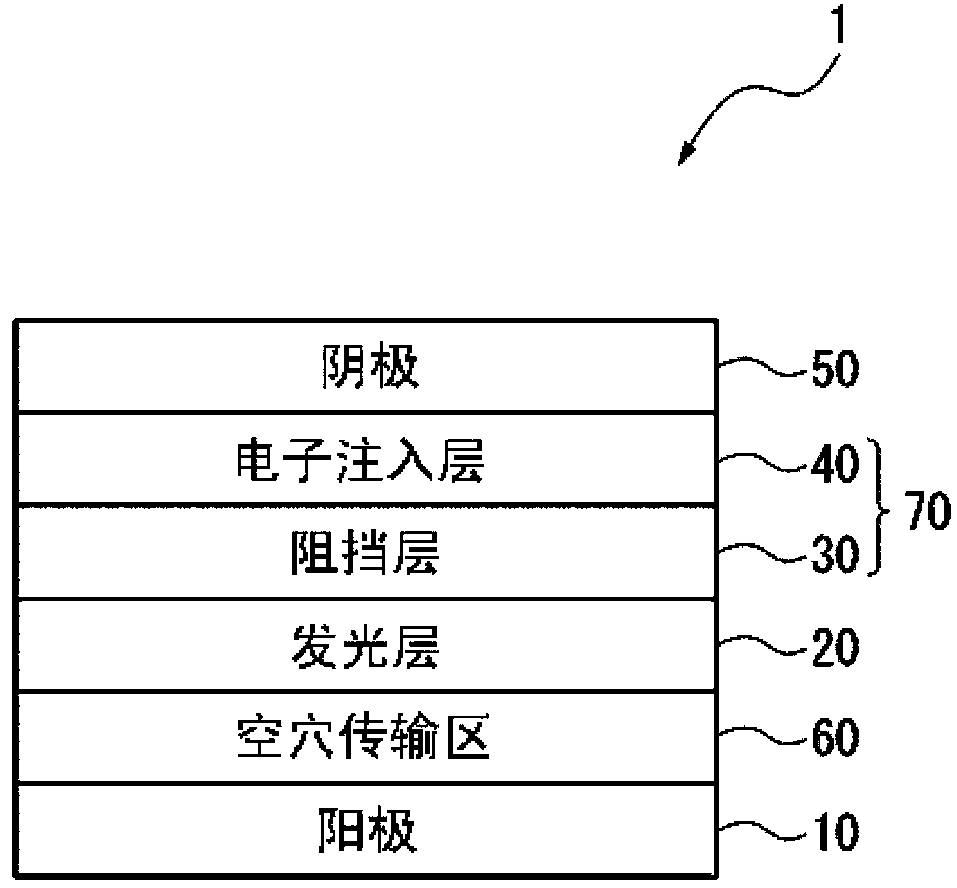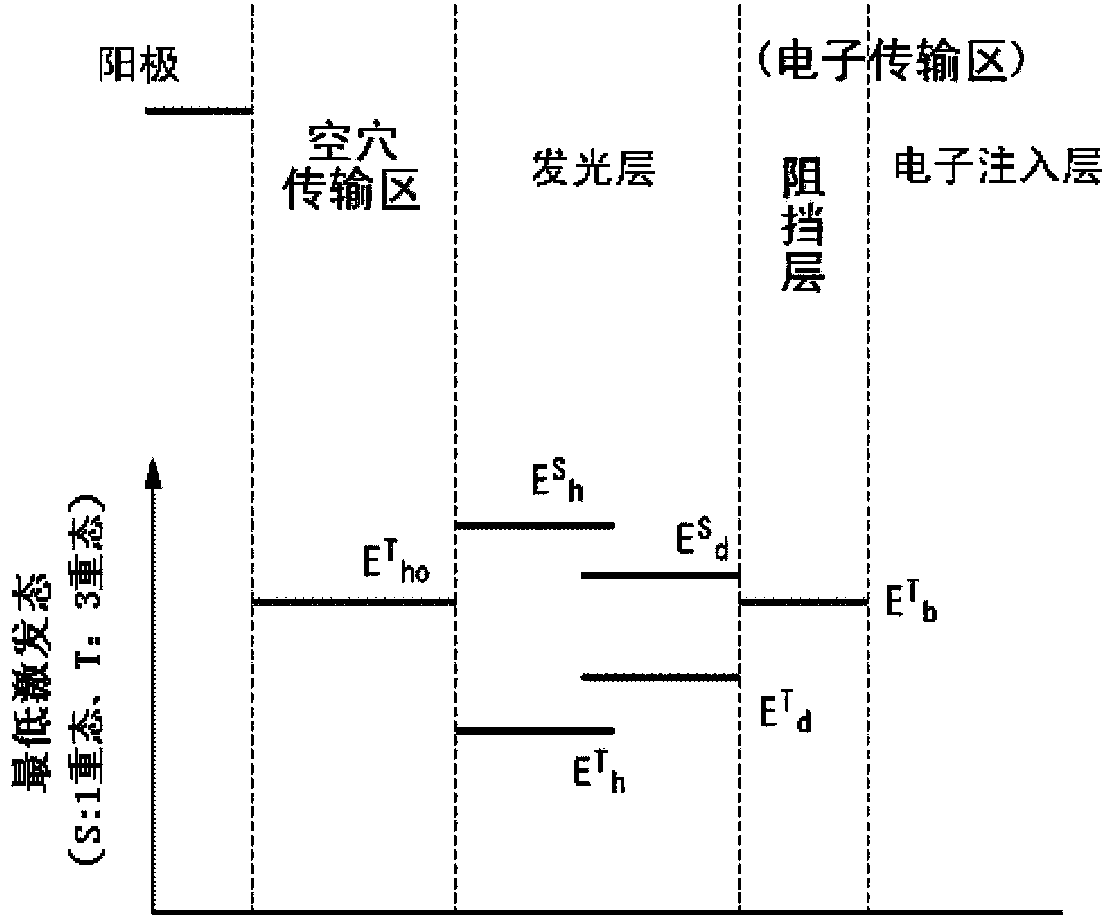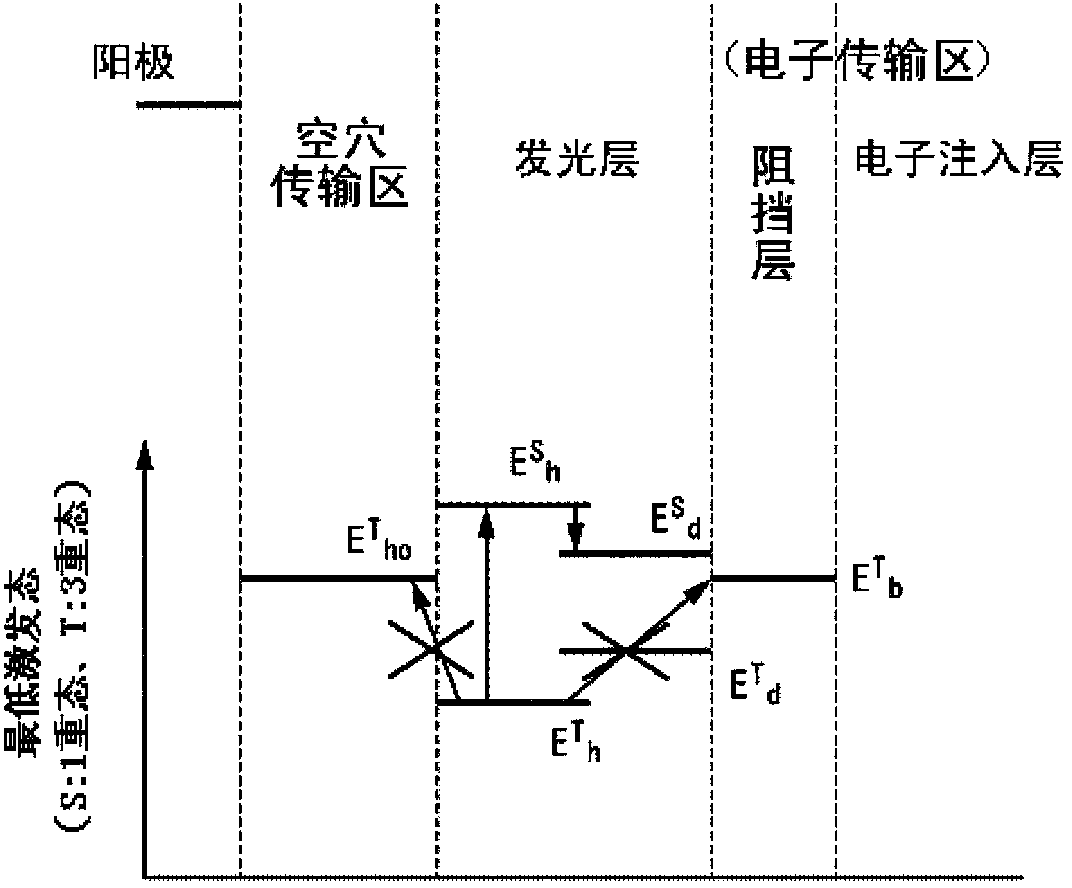Aromatic heterocyclic derivative, material for organic electroluminescent element, and organic electroluminescent element
A technology of electroluminescent elements and aromatic heterocycles, applied in the directions of luminescent materials, electrical components, organic semiconductor devices, etc.
- Summary
- Abstract
- Description
- Claims
- Application Information
AI Technical Summary
Problems solved by technology
Method used
Image
Examples
no. 1 Embodiment approach
[0423] This embodiment utilizes the TTF phenomenon. First, the TTF phenomenon will be described below.
[0424] Holes and electrons injected from the anode and cathode recombine in the light-emitting layer to generate excitons. According to conventional knowledge, the spin state is 25% for singlet excitons and 75% for triplet excitons. In conventionally known fluorescent devices, 25% of the singlet excitons emit light when they return to the ground state, and the remaining 75% of the triplet excitons do not emit light, but return to the ground state through thermal inactivation. Therefore, in the past, the theoretical boundary value of the internal quantum efficiency of the fluorescent element was 25%.
[0425]On the other hand, theoretically explore the behavior of triplet excitons generated inside organic substances. According to S.M.Bachilo (J.Phys.Cem.A, 104, 7711 (2000)), it is assumed that high-level excitons such as quintets return to triplet states immediately, an...
no. 2 approach
[0797] Figure 8 A schematic diagram showing an example of the organic EL element 2 according to the second embodiment.
[0798] The organic EL element of the present embodiment may be provided with an electron injection layer, Figure 8 The organic EL element 2 according to the second embodiment shown includes an anode 10 , a hole transport region 60 , a light emitting layer 20 , an electron transport region (blocking layer 30 in this embodiment), and a cathode 50 in this order. In the organic EL element of this embodiment, these layers are adjacent to each other.
[0799] The barrier layer 30 of the organic EL element 2 contains the aromatic heterocyclic derivative represented by the above-mentioned general formula (1), as in the first embodiment. In addition, other layers constituting the organic EL element 2 are also the same as those of the first embodiment.
no. 3 approach
[0801] Figure 9 A schematic diagram showing an example of the organic EL element 3 according to the third embodiment.
[0802] The organic EL element of the present invention may be provided with an electron injection layer on the cathode side of the electron transport layer, Figure 9 The organic EL element 3 according to the third embodiment shown is provided with an anode 10, a hole transport region 60, a light emitting layer 20, an electron transport region (in this embodiment, a blocking layer 30, an electron transport layer 41, and an electron transport layer 41) in the following order. injection layer 40), cathode 50. In this embodiment, these layers are adjacent to each other.
[0803] In the organic EL element 3, at least one of the electron injection layer 40 and the electron transport layer 41 preferably contains the above-mentioned aromatic heterocyclic derivative of the present invention. As the material contained in the electron transport layer, the materials...
PUM
| Property | Measurement | Unit |
|---|---|---|
| wavelength | aaaaa | aaaaa |
| wavelength | aaaaa | aaaaa |
| thickness | aaaaa | aaaaa |
Abstract
Description
Claims
Application Information
 Login to View More
Login to View More - R&D
- Intellectual Property
- Life Sciences
- Materials
- Tech Scout
- Unparalleled Data Quality
- Higher Quality Content
- 60% Fewer Hallucinations
Browse by: Latest US Patents, China's latest patents, Technical Efficacy Thesaurus, Application Domain, Technology Topic, Popular Technical Reports.
© 2025 PatSnap. All rights reserved.Legal|Privacy policy|Modern Slavery Act Transparency Statement|Sitemap|About US| Contact US: help@patsnap.com



